Do you know how you sometimes need to look up information about the people using your network quickly? An excellent tool called PowerShell can help with that.
PowerShell has this neat feature called the Active Directory module. It’s like a Swiss Army knife for managing all the stuff in your network – user accounts, computers, groups, you name it.
Now, here’s the cool part. There’s a special command in PowerShell called “Get-AdUser”. It’s handy when you want to learn about the people using your network. You can use it to look up one person or a whole bunch of people simultaneously.
Before using this nifty tool, you’ll need to ensure you have the Active Directory add-on installed. If you’re not sure how to do that, don’t worry! There are guides online that can walk you through it step by step.
Oh, and if you like working with a more visual setup, you can use something called the Windows PowerShell ISE. It’s like a fancy notepad for these commands. To open it, type “ISE” when you start up your computer and click on the Windows PowerShell ISE app.
First, we need to ensure we have the right tools. In this case, we need something called the ActiveDirectory module. Here’s how you can load it:
Import-module ActiveDirectoryJust type that into PowerShell, and you’re good to go! It’s like turning on the special network-searching features.
Now, want to see all the cool things you can do with this module? Try this:
get-command -Module ActiveDirectoryThis will show you a list of all the special commands you can use. It’s like a menu of all the network tricks you can do!
Okay, let’s get to the good stuff. Say you want to find out everything about a user named John Smith. You’d use this:
Get-ADUser -Identity JohnSmith -Properties *This is like saying, “Hey, PowerShell, tell me everything you know about John Smith.” The star (*) means “everything.”
Want to see all the users in your network? Easy peasy:
Get-ADUser -Filter *This is like asking for a list of everyone in your digital phonebook.
Sometimes, you might want to look at users in a specific part of your network. It’s like looking at just one department in a big company. You can do that like this:
Get-ADUser -SearchBase "OU=Extwindows Users,dc=ad,dc=extwindows.com" -Filter *You’d replace “Extwindows Users” and “extwindows.com” with whatever fits your network.
Maybe you want to find all the Smiths in your network:
Get-ADUser -Filter {Surname -eq "Smith"} -SearchBase "DC=ad,DC=company,DC=com"This is like flipping through your digital phonebook and pulling out all the Smiths.
Need everyone’s email addresses? No problem:
Get-ADUser -Filter * -SearchBase "DC=ad,DC=company,DC=com" -Properties mail | Select mail | Export-CSV -path C:\UserEmailAddress.csv -NoTypeInformationThis command grabs all the email addresses and puts them in a neat file on your computer.
And here’s a cool trick: if you ever forget how to use one of these commands, ask PowerShell for help:
Get-Help Get-AdUser -examplesThis will show you many examples of how to use the Get-AdUser command. It’s like having a built-in tutor!
So there you have it! You’re now equipped to explore your network like a pro. Remember, practice makes perfect. The more you play around with these commands, the more comfortable you’ll get.

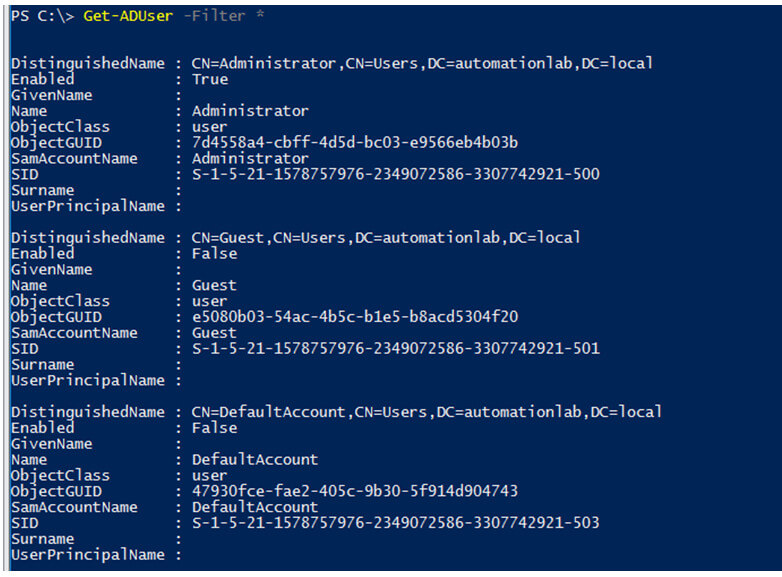
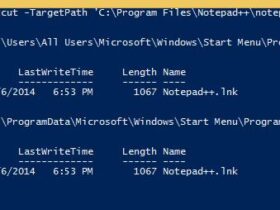
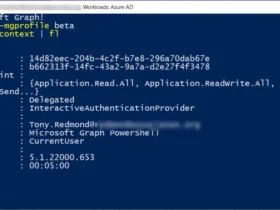
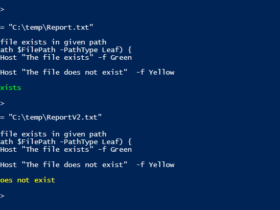
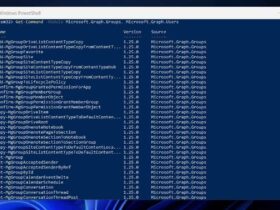
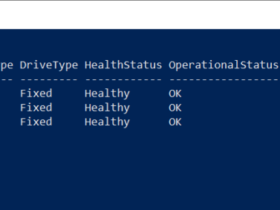
Leave a Reply
View Comments